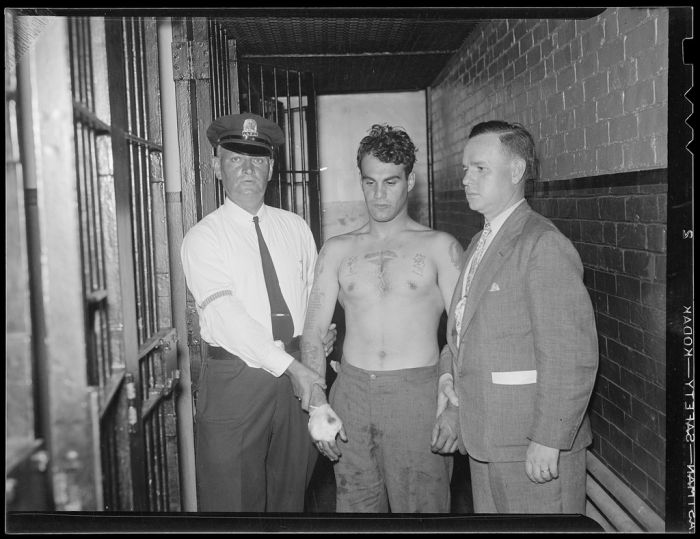History: Boston Police, Behind The Badge, 1930s, Boston, Massachusetts, United States
|
In the 1770s, British attempts to exert more-stringent control on the thirteen colonies—primarily via taxation—led to the American Revolution. The Boston Massacre, the Boston Tea Party, and several early battles—including the Battle of Lexington and Concord, the Battle of Bunker Hill, and the Siege of Boston—occurred in or near the city. During this period, Paul Revere made his famous midnight ride. After the Revolution, Boston had become one of the world's wealthiest international trading ports because of the city's consolidated seafaring tradition. Exports included rum, fish, salt, and tobacco. During this era, descendants of old Boston families were regarded as the nation's social and cultural elites; they were later dubbed the Boston Brahmins.
The Embargo Act of 1807, adopted during the Napoleonic Wars, and the War of 1812 significantly curtailed Boston's harbor activity. Although foreign trade returned after these hostilities, Boston's merchants had found alternatives for their capital investments in the interim. Manufacturing became an important component of the city's economy, and by the mid-19th century, the city's industrial manufacturing overtook international trade in economic importance. Until the early 20th century, Boston remained one of the nation's largest manufacturing centers and was notable for its garment production and leather-goods industries. A network of small rivers bordering the city and connecting it to the surrounding region made for easy shipment of goods and led to a proliferation of mills and factories. Later, a dense network of railroads facilitated the region's industry and commerce. From the mid-19th to late 19th century, Boston flourished culturally. It became renowned for its rarefied literary culture and lavish artistic patronage. It also became a center of the abolitionist movement.
The city reacted strongly to the Fugitive Slave Law of 1850, which contributed to President Franklin Pierce's attempt to make an example of Boston after the Burns Fugitive Slave Case.
In 1822, the citizens of Boston voted to change the official name from "the Town of Boston" to "the City of Boston", and on March 4, 1822, the people of Boston accepted the charter incorporating the City. At the time Boston was chartered as a city, the population was about 46,226, while the area of the city was only 4.7 square miles (12 km2). In the 1820s, Boston's population began to swell, and the city's ethnic composition changed dramatically with the first wave of European immigrants. Irish immigrants dominated the first wave of newcomers during this period. By 1850, about 35,000 Irish lived in Boston. In the latter half of the 19th century, the city saw increasing numbers of Irish, Germans, Lebanese, Syrians, French Canadians, and Russian and Polish Jews settle in the city. By the end of the 19th century, Boston's core neighborhoods had become enclaves of ethnically distinct immigrants—Italians inhabited the North End, Irish dominated South Boston and Charlestown, and Russian Jews lived in the West End. Irish and Italian immigrants brought with them Roman Catholicism. Currently, Catholics make up Boston's largest religious community, and since the early 20th century, the Irish have played a major role in Boston politics—prominent figures include the Kennedys, Tip O'Neill, and John F. Fitzgerald.
|
|









